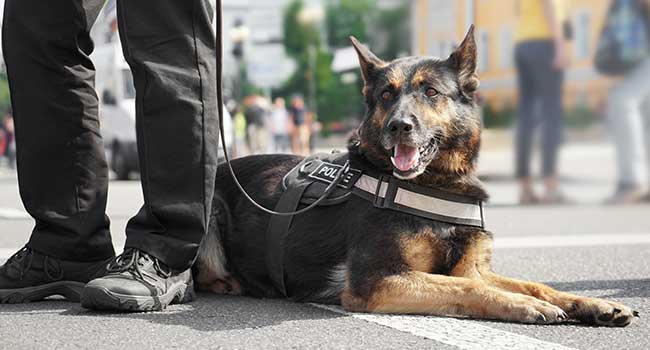
K-9 Safety Sweeps Introduced at Norwalk Schools
Chief of School Operations Frank Costanzo sent a letter to parents on Sept. 18 detailing that several police officers and dogs could be present during upcoming safety checks on campuses.
- By Jessica Davis
- September 28, 2018
With rising concerns about security and safety on campuses, Norwalk Public Schools in Norwalk, Connecticut, has been increasing measures to ensure student safety. Soon, their latest policy will add safety sweeps at the middle and high schools conducted by police and K-9 detection dogs.
Chief of School Operations Frank Costanzo sent a letter to parents on Sept. 18 detailing that several police officers and dogs could be present during upcoming safety checks on campuses. Officers and the detection dogs would be searching for explosives and drugs, he said, and the checks will be random and unannounced.
“We have really just been proactive about improving our security and preparedness over the past three years and this is just another strategy at being better prepared and keeping students safe,” he said.
The move may be spurred by the arrest of a cafeteria at Norwalk High School earlier this month for allegedly bringing an unloaded weapon onto school property.
The district has also increased security staff at elementary schools, installed digital video surveillance systems and implemented the Raptor School Visitor Management system this year, Costanzo said.
Other Connecticut school districts have also implemented some form of search protocols, including Greenwich and Monroe school districts.
“Greenwich High School has used the Greenwich Police Department’s canine unit on campus for the last nine years,” said Kimberley Eves, director of communications for Greenwich Public Schools.
Monroe protocol holds that school property like lockers, classrooms and storage areas can be searched. District policy states that while students may be present in the building during a search, they must be kept from any areas where a search is actively taking place.
Joe Rios, the school district preparedness coordinator, could not give an exact date and time for when the safety sweeps would begin to take place, but said school authorities are in the process of planning future sweeps.
About the Author
Jessica Davis is the Associate Content Editor for 1105 Media.